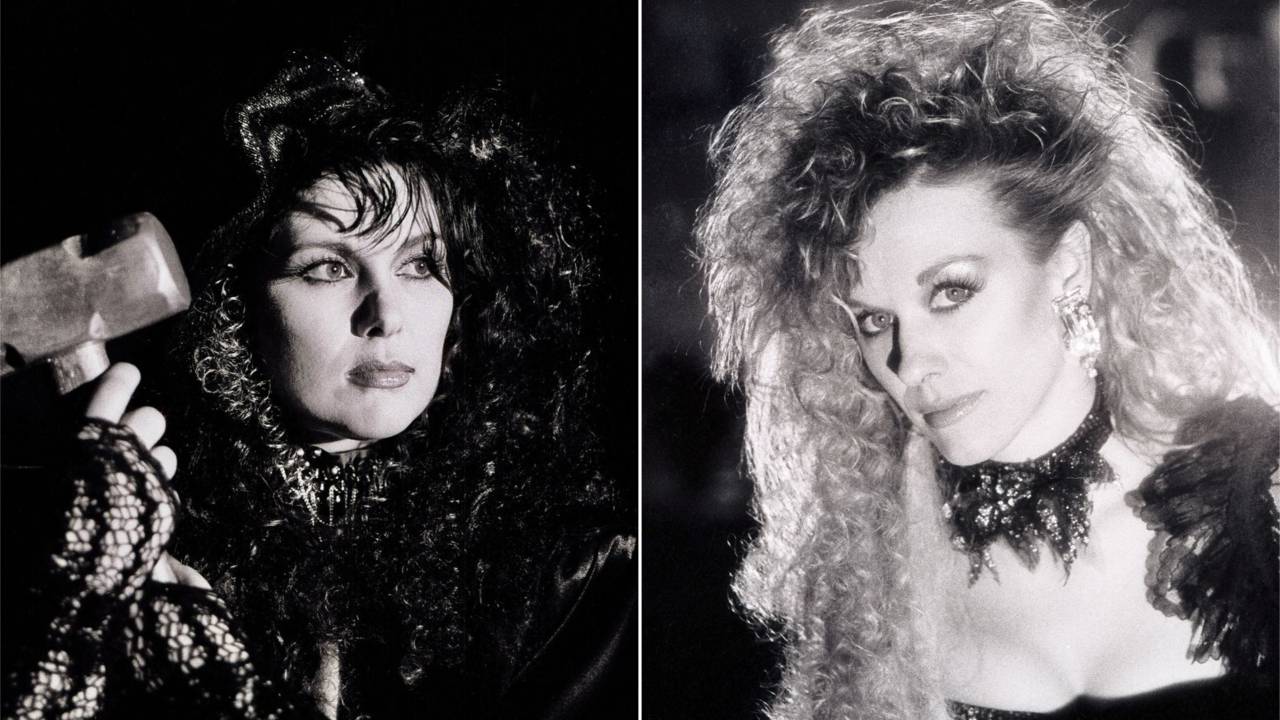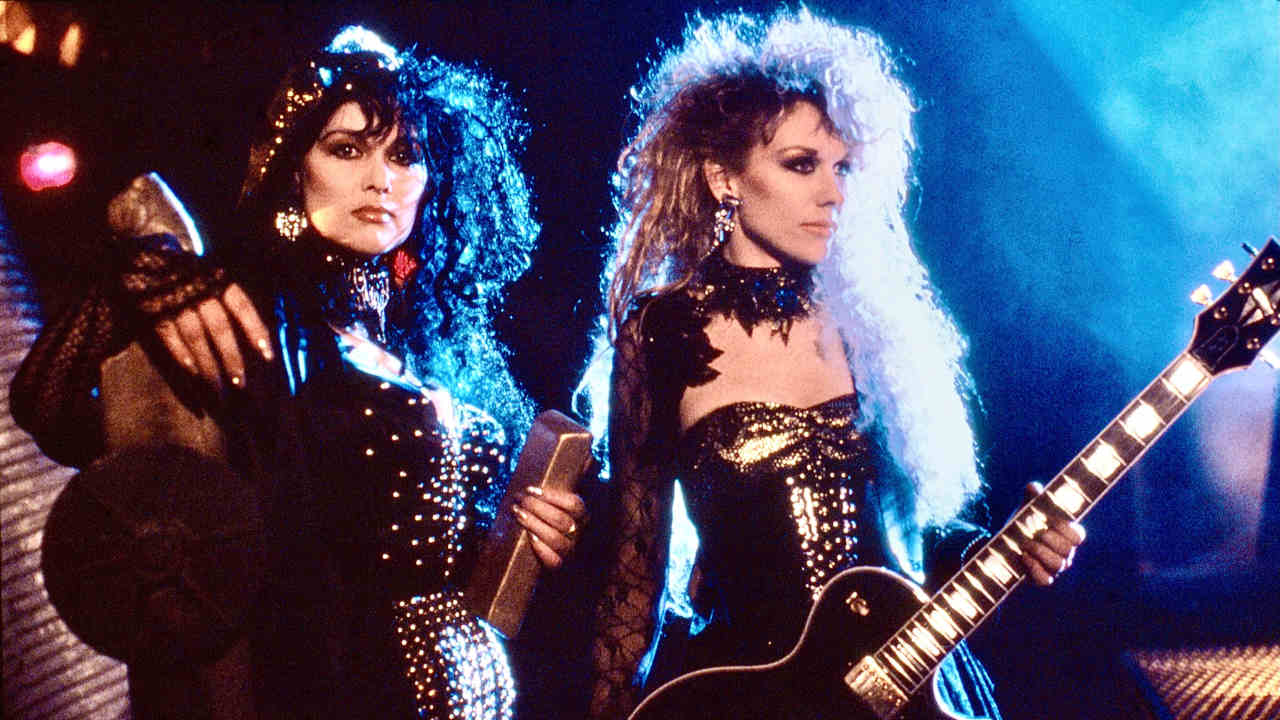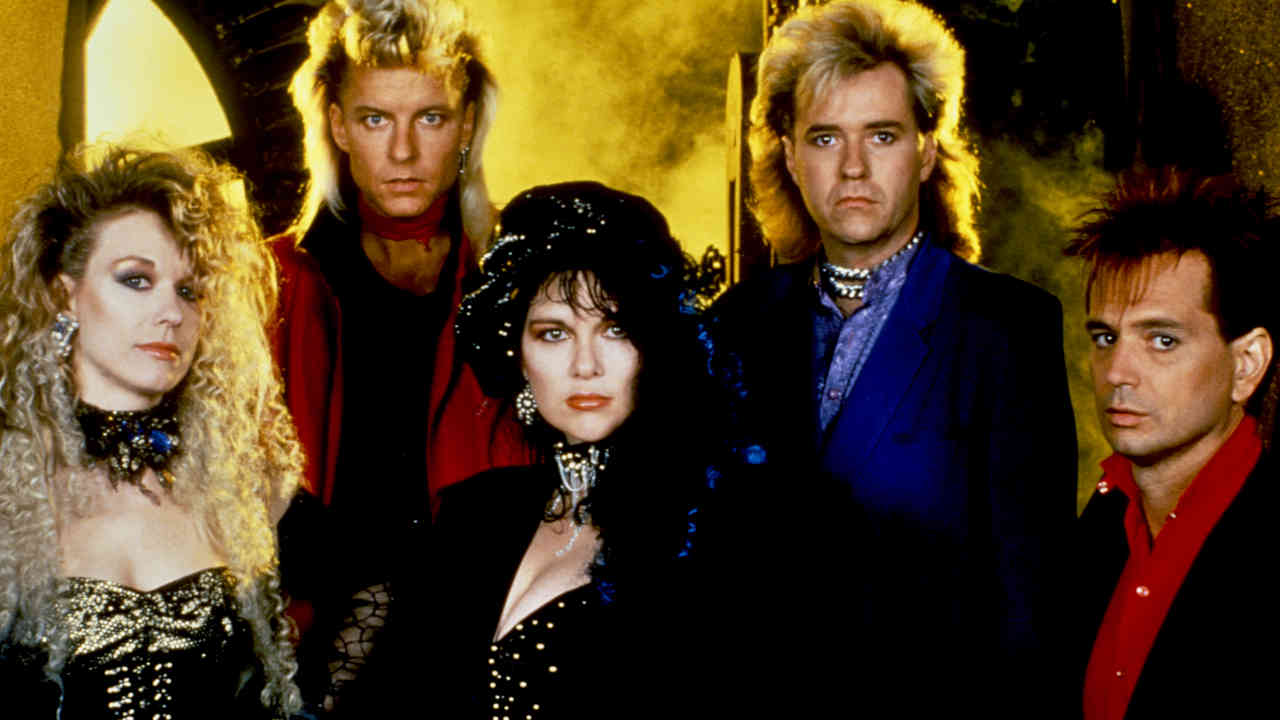Michael Jackson’s Thriller proved an unlikely catalyst for Heart’s self-titled 1985 album, a career-rejuvenating statement of intent – the record that took them from band on the wane to polished, hit single-toting, stadium-straddling superheroes.
By 1983, the Seattle band were in a state of flux. “We’d just sort of washed up on the beach after a big personnel shift in the band and a management change,” remembers singer Ann Wilson. “We’d changed everything. Nancy and I just instinctively felt that we had come to the end of an era.”
That era was Heart’s first life – the band that first put the Wilson sisters on the musical map, the band that gave us classic 70s rock songs like Barracuda, Magic Man and Crazy On You. Having parted ways with guitarist Roger Fisher in late ’79, then drummer Michael Derosier and bassist Steve Fossen in ’82, Ann, Nancy and longtime guitarist Howard Leese had found their new rhythm section in former Montrose man Denny Carmassi and Spirit/Jo Jo Gunne bassist Mark Andes. And despite the obvious chemistry of the players, Passionworks, the first album they recorded together, far from set the world on fire. Which brings us to Jacko.
“Passionworks did okay,” recalls Howard Leese. “But it was put out at the same time as Thriller, so we couldn’t get even the records pressed, because all the plants were running 24/7 making copies of Thriller. It was so frustrating.”
Frustrating maybe, but the album’s lack of success led the band to seek a new contract. “We signed with Capitol,” says Ann, and it proved to be their saving grace. “We had the enthusiasm of Don Grierson, the guy who signed us at Capitol, but we knew that we had to make a hit record or quite possibly we’d find ourselves without a record deal.
The mood in the band was that our expectations were not real high. We were just trying to re-form – things were kinda chaotic.”
Intrinsic to this change was Heart’s new manager, Trudy Green, a feisty Brit who had more confidence in the Seattle quintet than they had themselves. “Trudy’s a funny and great little firecracker of an English woman,” guitarist Nancy Wilson says affectionately. “And she was like, ‘Alright you darlings, let’s get this together, let’s get costumes, let’s get hair, let’s get make-up, let’s rock!’ So that’s exactly what we did.”

And did they ever. If 70s Heart was all about flares, folksy acoustic guitars, flutes and mandolins vying with razor-sharp riffs, then Heart of the 80s would be the product of the era Gordon Gekko would be proud of, where greed was good and lunch was for wimps. Grierson, Green and producer Ron Nevison realised Heart had the potential to be a force to be reckoned with again. And it was all done as a calculated move.
“Back then in the extremely egocentric and ambitious 80s there was that hysterical, desperate, we’re-just-gonna-do-whatever-it-takes attitude,” says Ann. “And that’s what the record company had. We were encouraged to have it too, and we did have it. We did a lot of stuff going after this goal, and I think in the process we forged a pretty amazing group. It just took me a while to get used to the idea of singing other people’s songs, of being an interpreter of other people’s songs.”
Yes, the outside writers, the image and the glossy MTV videos – the triple threat that re-established Heart – gave them the hit singles, gave them the world. The Wilsons and Leese credit Grierson with guiding the band toward their eventual arena rock direction.
“He had a vision for the band that we hadn’t even thought of yet because we were just out there, slogging away playing concerts in the country,” remembers Ann. “We weren’t back in the cultural centres, where they were formulating all this new video world and songwriting world. They were making images back in LA, New York and London, and we were in the middle of America. Don and Capitol were imagining something for us that we couldn’t even guess at yet.”
Heart would go on to sell more than five million copies in the US on the strength of four Top 10 singles: What About Love, Never, These Dreams and Nothin’ At All. Three of which had no songwriting input from the band themselves (Never was a co-write between Ann, Nancy and Holly Knight). But while the quintet were all for reinvention, relinquishing songwriting control was a bitter pill to swallow at first, especially for the sisters.
“Oh no!” laughs Ann. “It took Nancy and I a bang over the head with a sledgehammer to understand that it was a good thing for us, because we’d previously written everything. But we’d got to this fork in the road where we were still writing all these songs and giving them to the band and giving ’em to the record company and nobody was saluting.
“The type of stuff we were writing was not the type of stuff that was being accepted by radio or on the record company level or anything. So we kept giving our songs to the pile that were under consideration for the Heart record – maybe, 60 per cent of them were songs that Nancy and I wrote, but the 40 per cent were the ones that were getting used,” Ann laughs today. “That sounds funny, because you’d think Nance and I would be in the driver’s seat on that, but at that time we were not.”
“Ann and Nancy were never really happy with recording other people’s songs. But it was definitely the right thing to do,” says producer Ron Nevison, the man responsible for the glossy sound of Heart. “I wasn’t hearing any hit singles in the material they had brought in. It was good, but not what the radio was playing. I introduced them to a lot of songwriters, and we came up with the right mix.”
“Well, it was really hard because we liked the success that it brought a lot,” admits Ann. “But we really felt uncomfortable about the fact that we’d worked all those years and written all those songs and it took other people’s songs to get us up to Number Ones. But I’m not going to lie to you and say that someone else tied our hands and made us do it. We did it of our own free will, it’s just that later on when it became expected of us, that’s when we really went, ‘Okay, this is enough.’”
It wasn’t as if Heart hadn’t been a successful group in the past, but with MTV on the rise and the importance of the rock video almost superseding the music, it helped that this particular rock band had not just one, but two ladies in its line-up. And they were swiftly pushed to the fore.
“The whole rock video thing that came along with it really put a lot of stress on the situation,” says Nancy.
“Yeah, it really did,” agrees Ann. “Because we’ve never really traded on our gender. We’ve always been musicians first and women second. But when it came to the video era, all of a sudden we as women were being reinterpreted in the way that was pretty much inside a box. Inside an old-fashioned box – especially Nancy, because she’s so beautiful and blonde. So every video director wanted her to, like, fall into a vat of gold paint or wear the 10-inch heels and jump off a cliff with her guitar with her blonde hair flying. All the stereotypes and clichés that were put on us as women were pretty hard to take.”
“We had to go under the radar for a while,” says Nancy. “Because trying to live behind the image of the big sexy rock chicks with big sexy rock hair and big sexy rock clothes was hard work.”
These days, the Wilsons laugh at their implausibly big hair and corsets, but at the time it seemed like the most natural thing in the world. “At first, that part was definitely not calculated,” says Ann. “It was dress-up, it was kabuki, it was theatre. Both Nancy and I have always loved make-up and styling and clothes. And what person wouldn’t wanna just look at a rack of outrageous clothes and just pick from them and turn yourself into this amazing rock creature?”
It wasn’t just the girls who concentrated on their image either, as Leese freely admits. “That was a big part of that era – how we looked was so important. We spent a lot of time on the clothes. Each person had their own style that they wanted to do and we would work directly with these different designers and they would show us material and colours and drawings. It was fun…”
But what might look good – well, good in the 80s – on video or at a photo session was a different prospect when the band went on tour. “At first it was amazing fun,” says Ann. “And then we tried to take them out on the road to recreate that live. And with all the real conditions of playing in the Deep South in the extreme heat and humidity with a corset and big heavy hair and velvet and that kinda stuff, it became really hard.”
“Thinking of the 80s now, my feet automatically begin to hurt – all those stupid stilettos,” Nancy smiles with a shudder.
What About Love was the first single from Heart, and the first one to rocket up the chart. But it very nearly didn’t happen. “Ann didn’t like the song at all to start with,” remembers Nevison. “Neither did Nancy. But I told the band that I wasn’t going to force them to do anything, but I also didn’t want them to judge a song on the demo alone. I told them: ‘I don’t want you to listen to somebody’s wimped-out vocal, because you guys are the greatest singers in the fucking rock world.”
“I’ll never forget being up in Seattle with Ron and the band and we were auditioning songs,” continues Ann. “What About Love came up and everyone was going, ‘Oh my God, this is a great song, this is going to be a hit, we’re going to have to do it’. Now, my whole act is the lyrics and how I can relate to them and how I can put them across. But I saw the lyrics to that song as very much coming from a victim – and that doesn’t sit very well with me at all. So it was really a hard sell, but when we did it, I got so pissed off about the whole thing that I ended up singing the song as if I was angry and I guess that was what it needed – it was just a weak, limp victimy thing, but I made it more like a demand.
“Looking back at it now I think it probably was really good for me, it was like tempering some kind of metal. Like, I could be arrogant about that, but because as a singer I sang What About Love and Alone and these other songs, I had to come down a couple of pegs and learn how to sing in a different way.”

It wasn’t just the song that ended up a hit, the accompanying video was plastered over MTV for what seemed like forever. The shoot itself – directed by acclaimed British video director David Mallet, the man behind David Bowie’s Ashes To Ashes, Queen’s Radio Ga-Ga and I Want To Break Free promos among countless others – was also a hair-raising (or should that be hair-singeing) experience for the band. “During the guitar solo, Nancy and I are up on a spiral staircase,” says Leese. “And the flames come right up to us. Well, they didn’t tell us about that ahead of time. When we went up on that platform there’s only one way down and they lit it on fire. So when you see the flames licking my guitar, I had no idea that was going to happen. So if we look a little bit surprised, we are.
“The last shot of the whole video is where we’re playing on stage, and the director has flames going all over the stage and eventually the stage itself catches fire and his assistants are going, ‘David, it’s actually burning now, it’s not just the flame strips, the stage is actually on fire’, and he just goes, ‘Keep rolling, keep rolling!’ And that video is what really broke the ice for us. It was a real attention-getter, and people went, ‘Oh, Heart have a new record out.’”
However, it was These Dreams that gave Heart their first US No.1. With lyrics by Elton John’s wordsmith, Bernie Taupin, and music by Martin Page, it was also unusual since it was sung by Nancy. While the younger Wilson had traditionally sung a song or two on previous albums, this was the first time her lead vocal was used for a single.
“It was such a funny thing too because we just sort of found the song,” says Leese. “It was on our manager’s desk, it was written for Don Henley and he wasn’t gonna do it. We just found the tape and thought it was a perfect song for Nancy.”
Cut when she had a cold, Nancy could never better the vocal she performed when she was sick, the slight crack in her voice forming part of its charm. But it wasn’t everyone’s choice for a single…
Leese: “When we said we wanted to release it, everyone said, ‘No, hold on there, you can’t do that. You’ve never had a song with Nancy singing as a single. The record’s doing really great you’re just going to kill your momentum , don’t do it.’ The label, our manager, everybody. We said, ‘Well, we hate to insist, but we do insist and if you read our contract we choose, so we’re doing it.’ It was our first No.1. It was incredible.”
The video too, ended up being one of the most expensive ever made at that time. “It cost more than making the whole album,” recalls Leese. “But it was the number one video of all time for two years in a row on MTV. That’s how important video was. And how much of a hit we were.”
“It felt like a new band and we had some good camaraderie in those years with Denny, Mark and Howie,” says Ann. “At first it was a very tight and fun band. We were partying together and hanging out and being the public face of the record was the tip of the iceberg really, because what was going on among us was a whole lot of fun.
“I haven’t heard Heart in a long time. It sounds like a product of its era,” the singer concludes. “But if you listen deeper into the songwriting, some of those songs are great. They translate and they come down the years. That album, I gotta say, it’s glossy as hell, and it sounds very corporate, but the 80s were corporate. The 80s were driven by cocaine and arrogance and it fit that bill. We definitely succeeded in standing on top of the icy mountain.”
And they transcended it and lived to fight another day…
Originally published in Classic Rock Presents AOR issue 1

